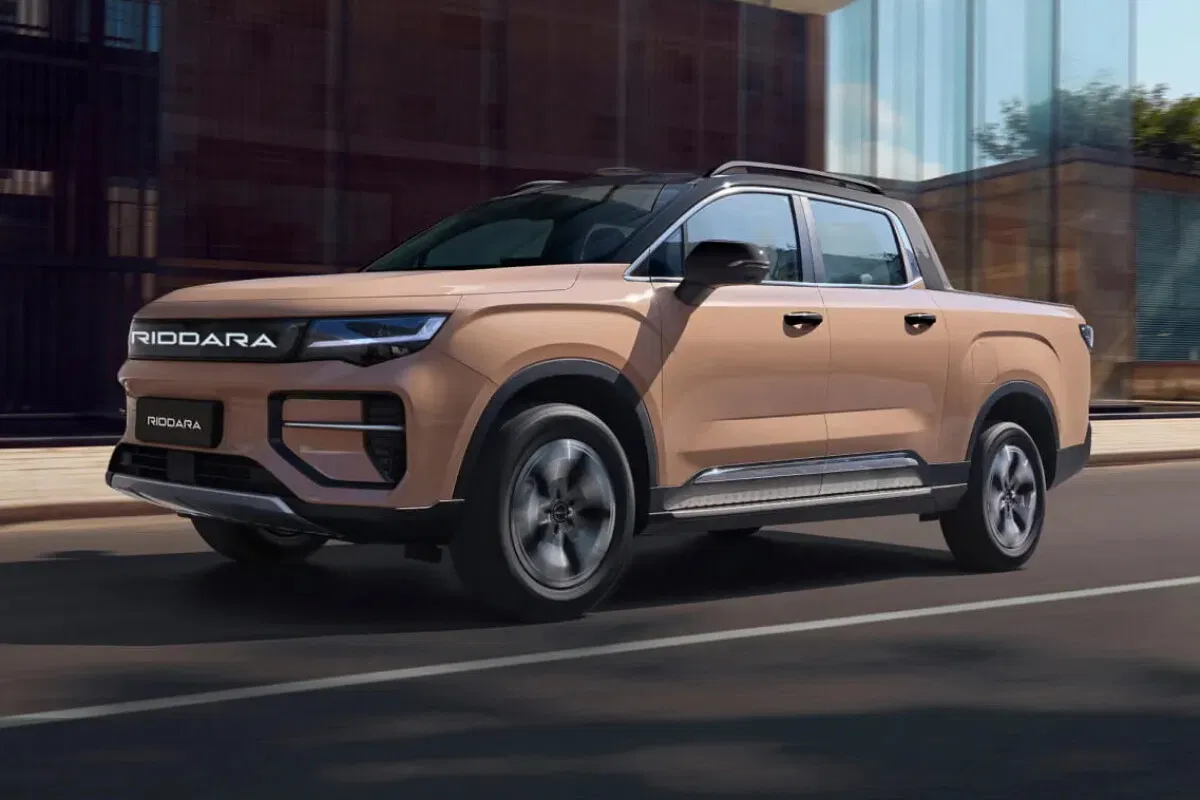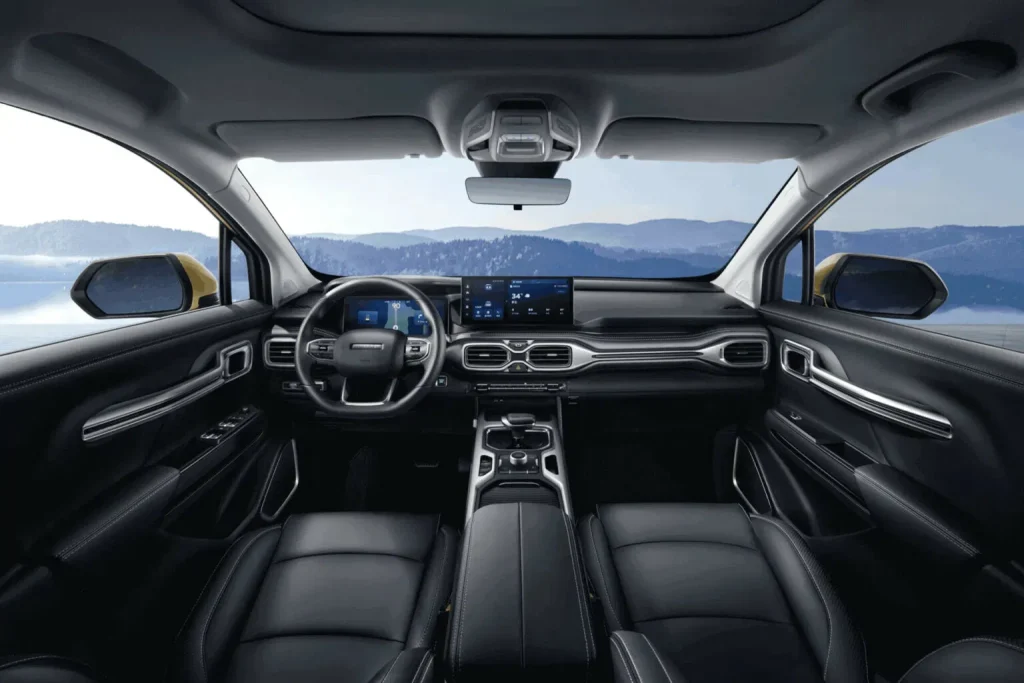
Australia’s growing interest in electric utes may soon widen to include a car-derived dual‑cab from Geely, after the Chinese automaker opened pre-orders in New Zealand for the Riddara RD6. The move tightens the timeline for a potential Australian release and highlights an evolving market where consumers weigh capability, price and practicality as EV utes proliferate.
Where the RD6 stands now
Geely has priced the Riddara RD6 in New Zealand at NZ$69,990 (about AU$63,300) plus on‑road costs, and confirmed a formal on‑sale date in New Zealand of 15 September 2025 with deliveries slated to begin by the end of October 2025. Geely Australia has not yet committed to local retail availability; a company spokesperson told Drive that “no decisions have been made at this stage” and any introduction to Australia will be guided by market research and consumer insights. Nevertheless, a Geely representative at the Shanghai motor show earlier in 2025 expressed hope the vehicle could reach Australian showrooms within the year.
Distribution and sales approach
In New Zealand the RD6 will be sold through existing Geely dealer channels operated by the Giltrap Group-the same distributor responsible for Geely, Volvo, Polestar and Zeekr in that market-rather than a standalone Riddara network. If Geely follows a similar approach in Australia, the RD6 would likely be offered through the current Geely dealer network rather than a separate retail arm.
Price positioning and local comparisons
At NZ$69,990 the RD6 slots close to established alternatives. For context:
- The BYD Shark 6 plug‑in hybrid is similarly priced in New Zealand and retails in Australia from AU$57,900 plus on‑roads.
- Other electrified utes in New Zealand include the Ford Ranger PHEV (from NZ$82,990) and the GWM Cannon Alpha (from NZ$64,990). In Australia, comparable starting prices are roughly AU$71,990 for the Ranger PHEV and AU$59,990 for the Cannon Alpha.
Past pricing patterns suggest the New Zealand sticker can be higher than Australian equivalents: the Geely EX5 Inspire is NZ$55,990 (approx. AU$50,600) while its Australian price was listed from AU$44,990. That precedent has led analysts to suggest the RD6 could land in Australia with a price beginning in the low-to-mid $50,000s to $60,000s-potentially undercutting some ladder‑frame alternatives, but final local pricing will depend on taxes, compliance costs and distributor strategy.

Platform, powertrain and capability
Unlike conventional ladder‑frame utes, the Riddara RD6 is built on Geely Group’s SEA electric vehicle platform-the same architecture underpinning passenger cars and SUVs from sister brands such as Volvo and Zeekr. Key specifications announced for the first dual‑motor RD6 include:
- Dual electric motors producing a combined 315 kW and 543 Nm.
- Claimed 0-100 km/h time of around 4.5 seconds.
- A 73 kWh lithium iron phosphate (LFP) battery pack with a WLTP‑rated range of about 360 km.
- Towing capacity up to 3,000 kg (braked) and a quoted payload of 1,030 kg.
Variants and trim options sold overseas include larger battery packs and single‑motor configurations; a plug‑in hybrid RD6 has also been launched in China and is reportedly being considered for New Zealand and Australia.
Practical considerations for Australian buyers
Range and real‑world towing: WLTP figures provide a baseline but can differ significantly under local conditions. Overseas testing of electric utes has shown range can fall sharply when towing-sometimes by as much as 50%-so a 360 km WLTP claim could translate to considerably less when loaded or towing trailers. For owners who regularly tow heavy loads or travel long distances between chargers, range planning and access to high‑power DC fast charging will be crucial.
Battery chemistry: The RD6’s LFP battery offers safety and longevity benefits-LFP cells are less prone to thermal runaway and typically cycle longer than nickel‑based chemistries. The trade‑off is lower energy density, which contributes to the RD6’s modest WLTP range compared with some competitors using higher energy density cells.
Payload and towing: The headline towing figure of 3,000 kg is competitive and will appeal to tradies and recreational tow‑users, while a 1,030 kg payload is substantial for a dual‑cab car‑based ute. Buyers should verify payload calculations once local specifications are finalised, as equipment levels and options can affect maximum payload.
Comfort and kit: The RD6’s feature list is aimed at premium mainstream buyers, with leather‑style trim, ventilated front and rear seats, a 14.6‑inch infotainment display, surround‑view cameras including a simulated under‑floor view, and other convenience features that mirror passenger‑car expectations more than traditional workhorse utes.
Regulatory, aftersales and warranty issues
If Geely chooses to sell the RD6 in Australia, the vehicle will need to meet Australian Design Rules (ADRs) and local homologation requirements, which can affect timelines and on‑road spec. Prospective buyers should watch for details on:
- Warranty coverage and roadside assistance in Australia.
- Local parts availability and dealer service capability.
- Safety ratings from ANCAP or equivalent testing in the Australasian region-these may not mirror European or Chinese test results and can influence buyer confidence and insurance.
Market context: car‑based EV utes versus ladder‑frame rivals
The RD6 represents the expanding category of car‑derived electric utes that trade the heavy‑duty durability of ladder‑frame platforms for better on‑road refinement, faster acceleration and passenger comfort. For urban or light commercial buyers who prioritise ride quality, technology and efficiency over extreme off‑road ruggedness, car‑based EV utes can be an attractive proposition. However, builders and operators who require chassis endurance and extreme payload/tow robustness may still favour ladder‑frame designs.
What the RD6 could mean for Australian buyers
If introduced here, the RD6 would broaden the EV ute market for buyers seeking a premium, tech‑forward dual‑cab without the full weight and service costs of a traditional body‑on‑frame work truck. Price competitiveness, the availability of variants (single motor or larger battery), and demonstrable real‑world towing performance will determine its appeal. Equally important will be Geely’s service and warranty proposition and the depth of the local dealer network.
Conclusion
The Geely Riddara RD6’s launch in New Zealand places it squarely on Australia’s radar. Its combination of impressive performance figures, useful towing capacity and contemporary passenger‑car comforts positions it as a credible contender among electrified utes-particularly for buyers prioritising on‑road refinement over traditional ladder‑frame robustness. Yet significant questions remain about real‑world range under tow, local pricing, homologation and aftersales support. Australians keen on an electric ute should watch closely for Geely Australia’s decision and final local specifications before drawing firm conclusions.
FAQs
Will the Geely Riddara RD6 be available in Australia?
Geely Australia has not confirmed a local launch. The company says no decisions have been made and any introduction will follow market research and consumer insight. The RD6 is available for pre‑order in New Zealand, which often signals a closer likelihood of entry to neighbouring markets.
How much will the RD6 cost in Australia?
New Zealand pricing is NZ$69,990 (approx. AU$63,300). Historical price differences between NZ and AU models suggest Australian pricing could be lower, but final retail pricing for Australia is not yet announced. Expect the RD6 to be positioned competitively against other electrified utes.
What is the real driving range?
Geely quotes a WLTP range of about 360 km from a 73 kWh LFP battery for the dual‑motor RD6. Real‑world range will vary with conditions, driving style and payload. International testing of electric utes indicates range can be substantially reduced when towing.
Can the RD6 tow?
Yes-Geely claims a braked towing capacity of 3,000 kg and a payload of 1,030 kg for the model shown. Prospective buyers should confirm final Australian specifications and how options affect payload and towing limits.
What battery does it use and what are the pros/cons?
The RD6 uses a lithium iron phosphate (LFP) battery chemistry. Pros: greater thermal stability, longer cycle life and typically safer chemistry. Cons: lower energy density than nickel‑based chemistries, which can reduce range for a given pack size.
How long will charging take?
Geely has not provided local charging times for Australia yet. Charging performance depends on the vehicle’s onboard charging capacity and the power level of DC fast chargers; expect typical medium‑range EV fast‑charging times for a 70‑plus kWh LFP pack, but wait for official local figures.
When will New Zealand customers receive deliveries?
Pre‑orders are open with a formal on‑sale date of 15 September 2025 in New Zealand and customer deliveries expected by the end of October 2025.
What should Australian buyers consider before ordering?
Australia‑bound buyers should consider local homologation status, warranty and aftersales support, real‑world towing performance, charging infrastructure on their routes, and how the vehicle will be used (urban commuting versus heavy towing/off‑road use).
About EV Evolution
EV Evolution is the leading online platform dedicated to Australian electric vehicle owners and enthusiasts. We foster a vibrant community, delivering essential EV news and insights, and enhancing user engagement through our innovative, AI-powered chatbot for dynamic discussions. Our mission is to empower Australian electric vehicle owners and enthusiasts by fostering a vibrant, AI-driven online community that connects, informs, and advances the nation’s electric vehicle landscape.




